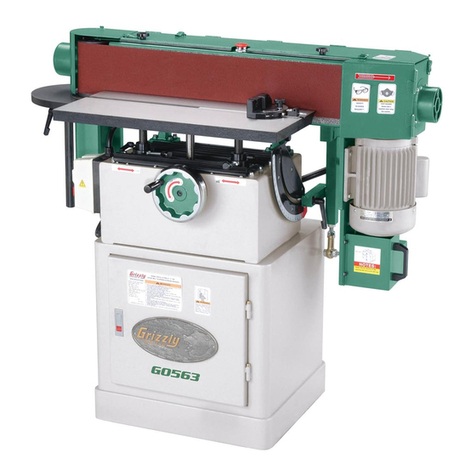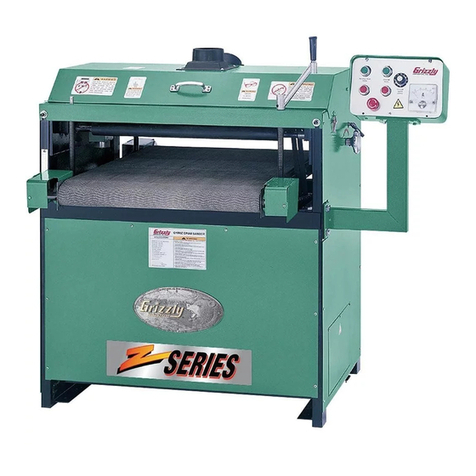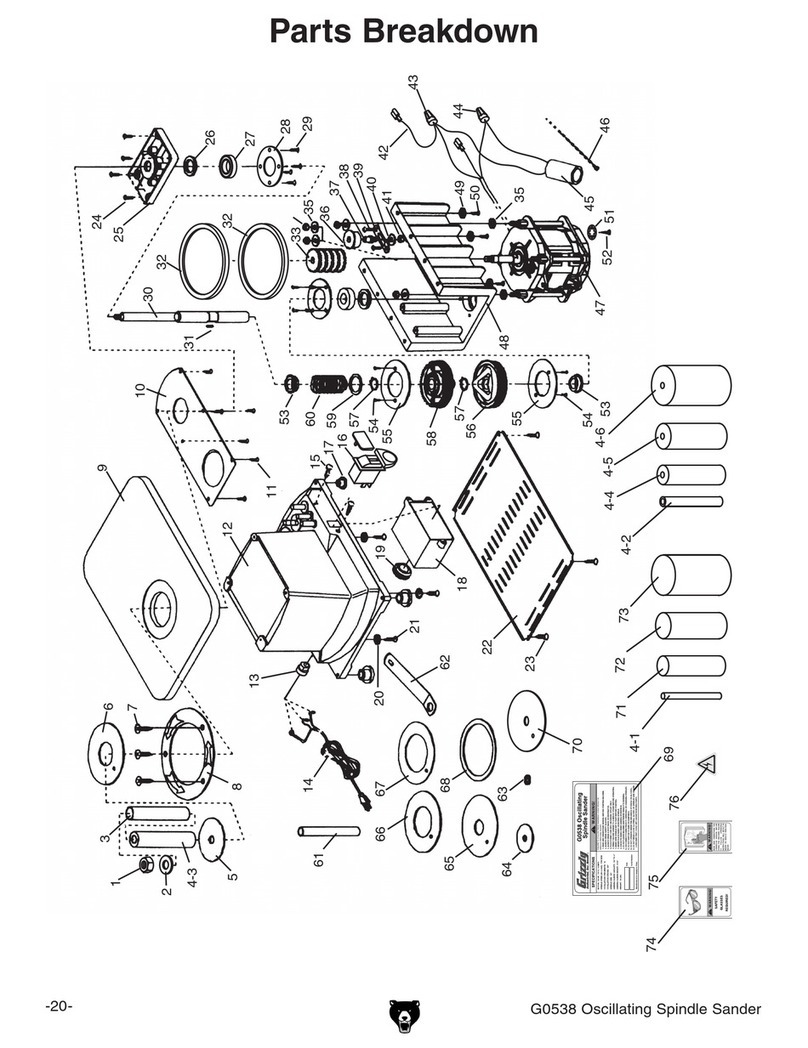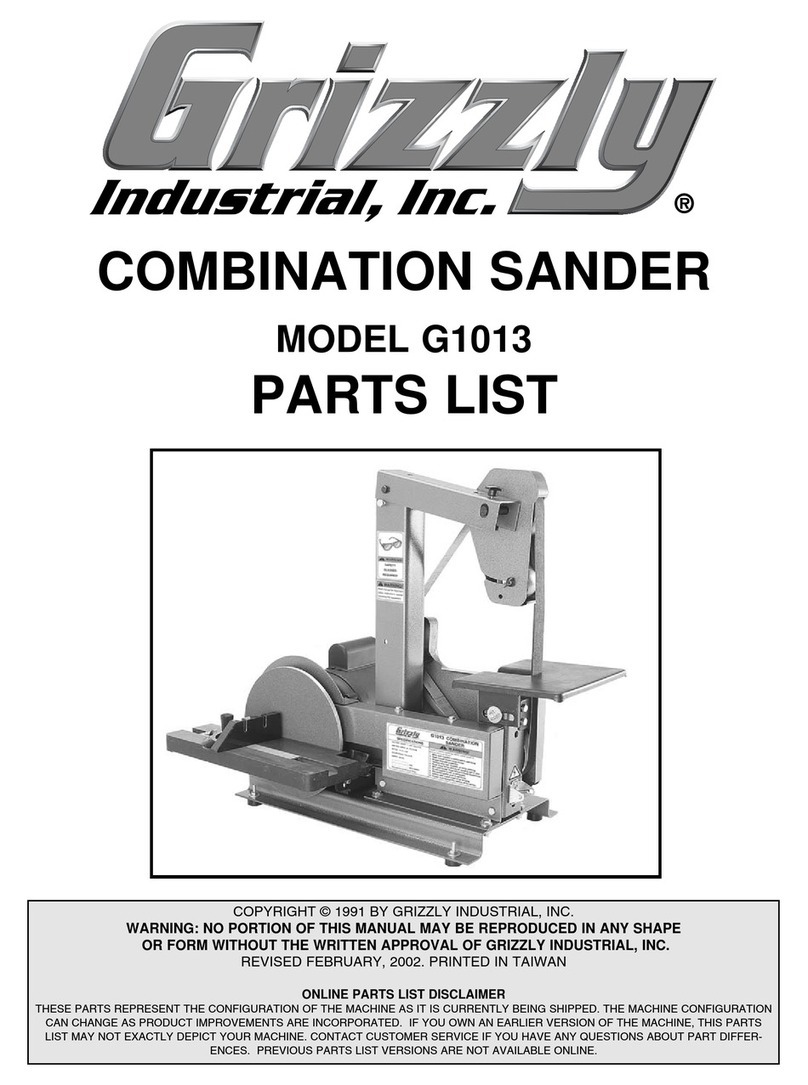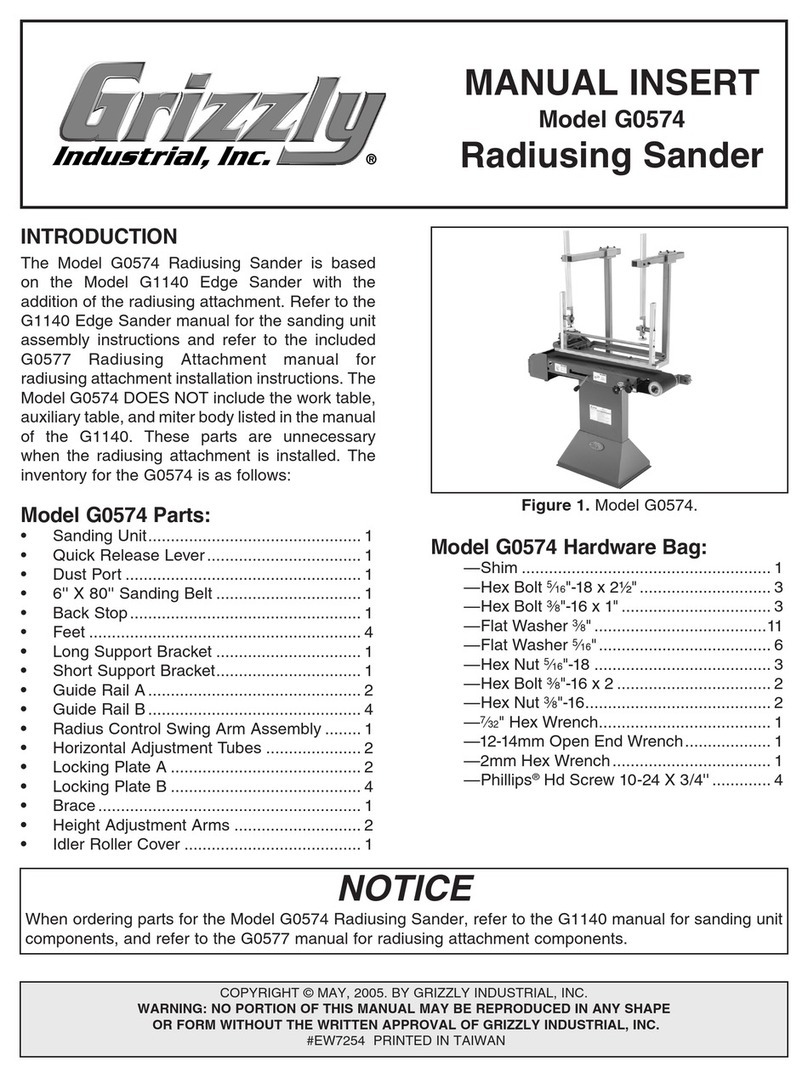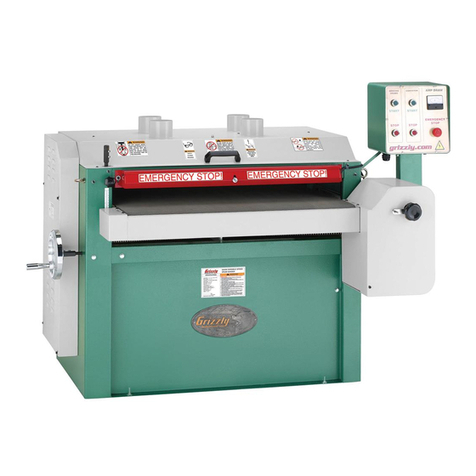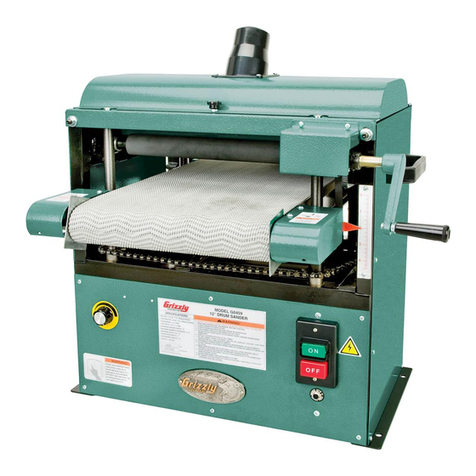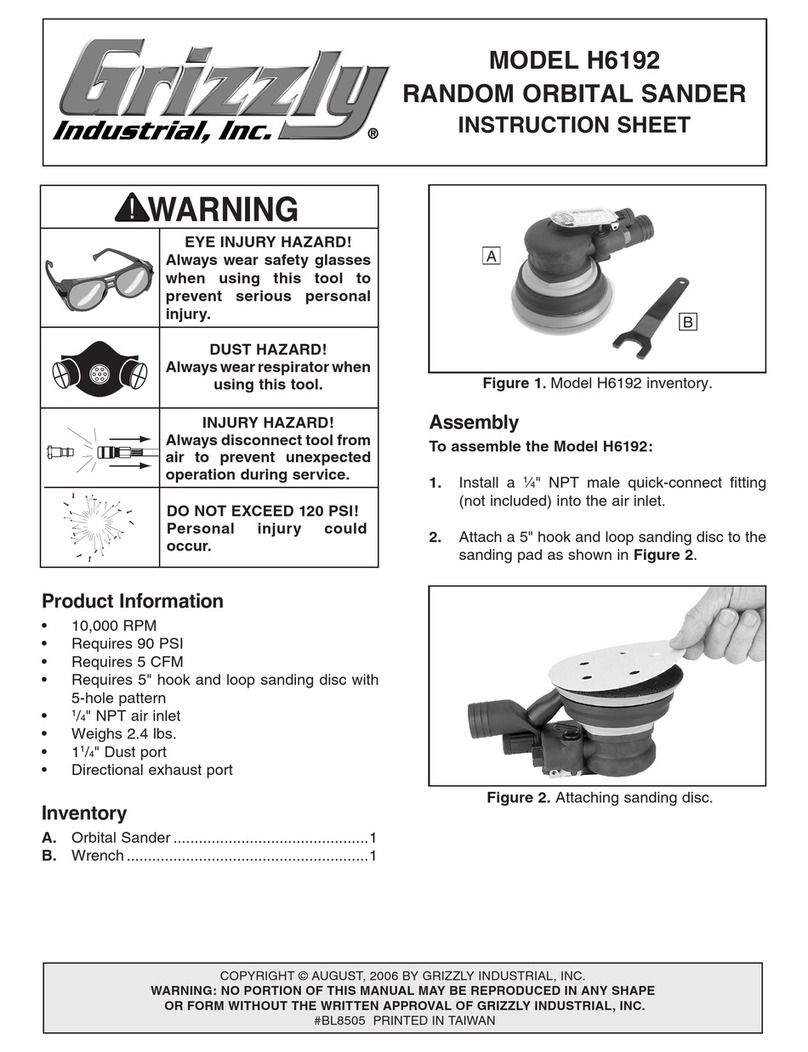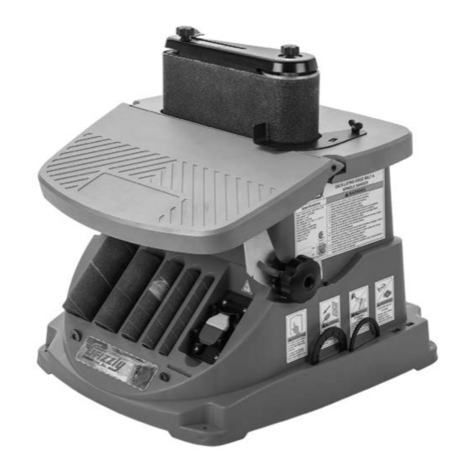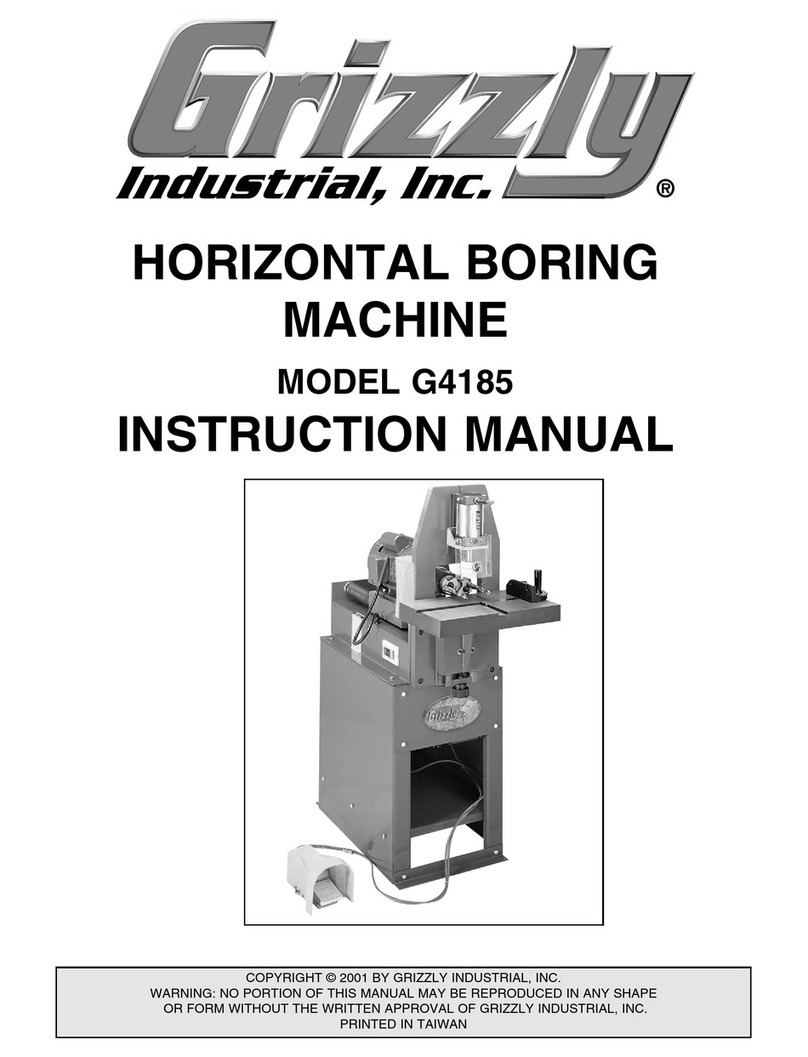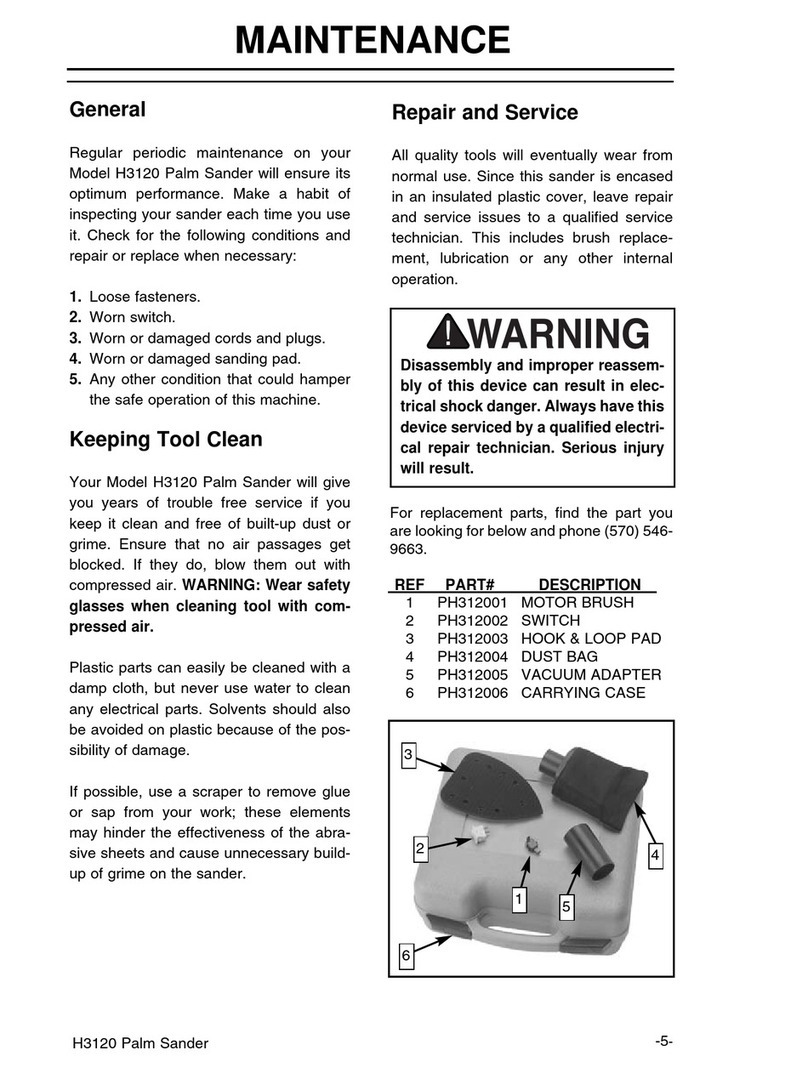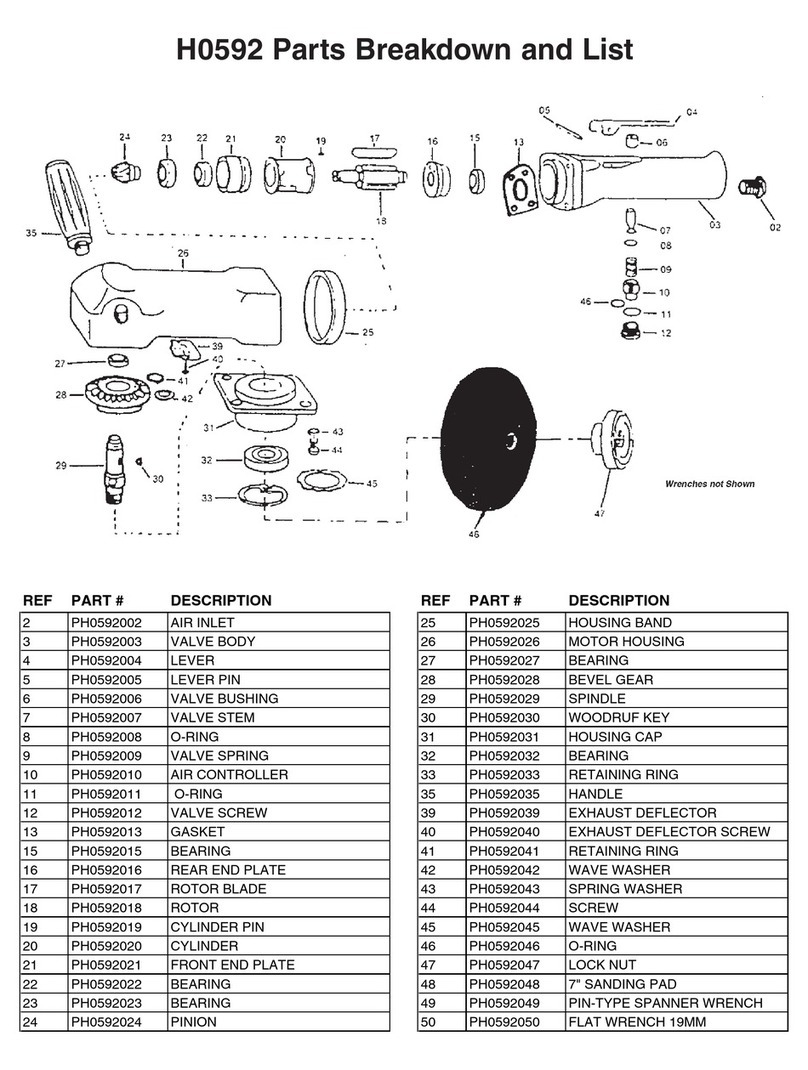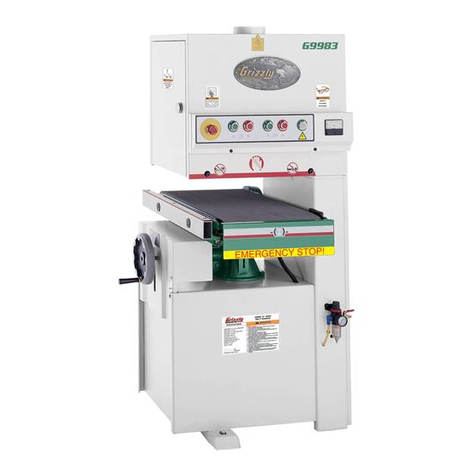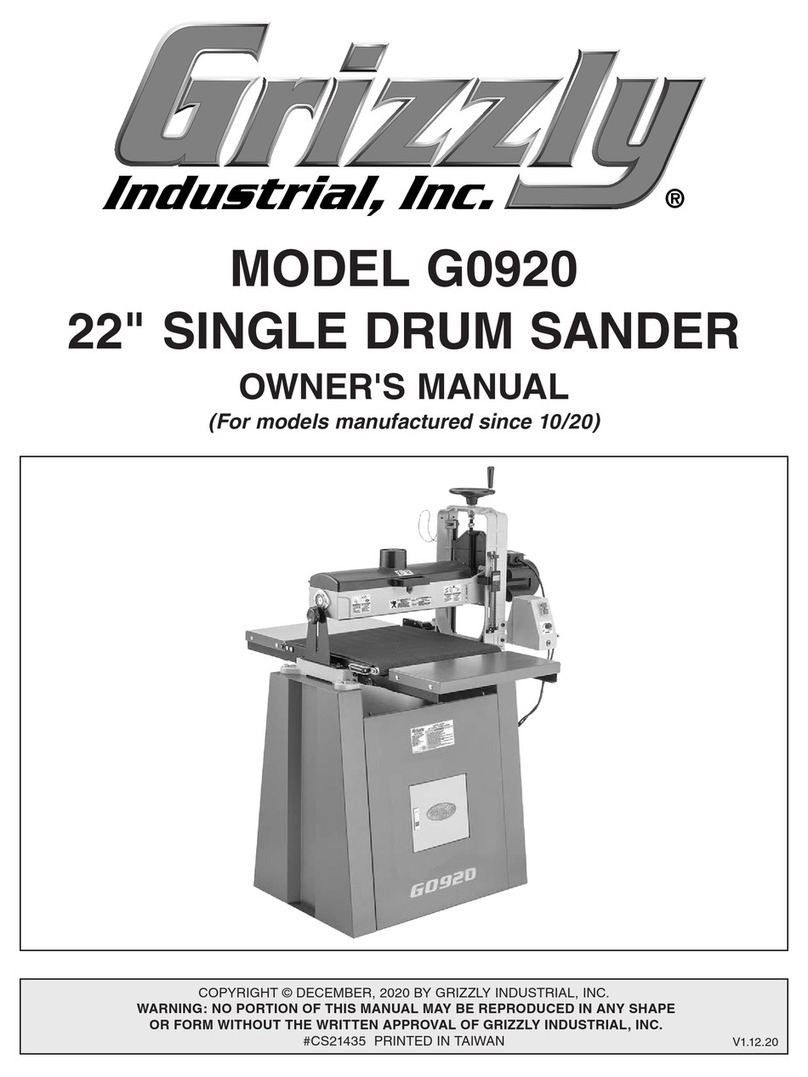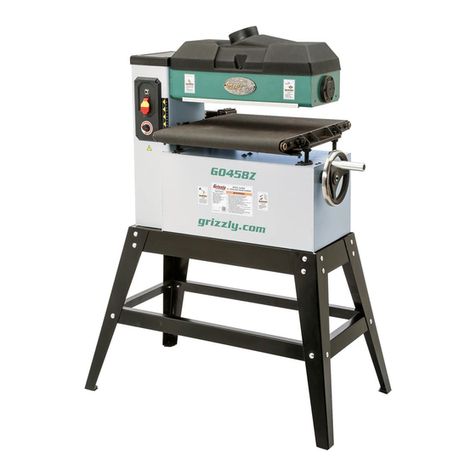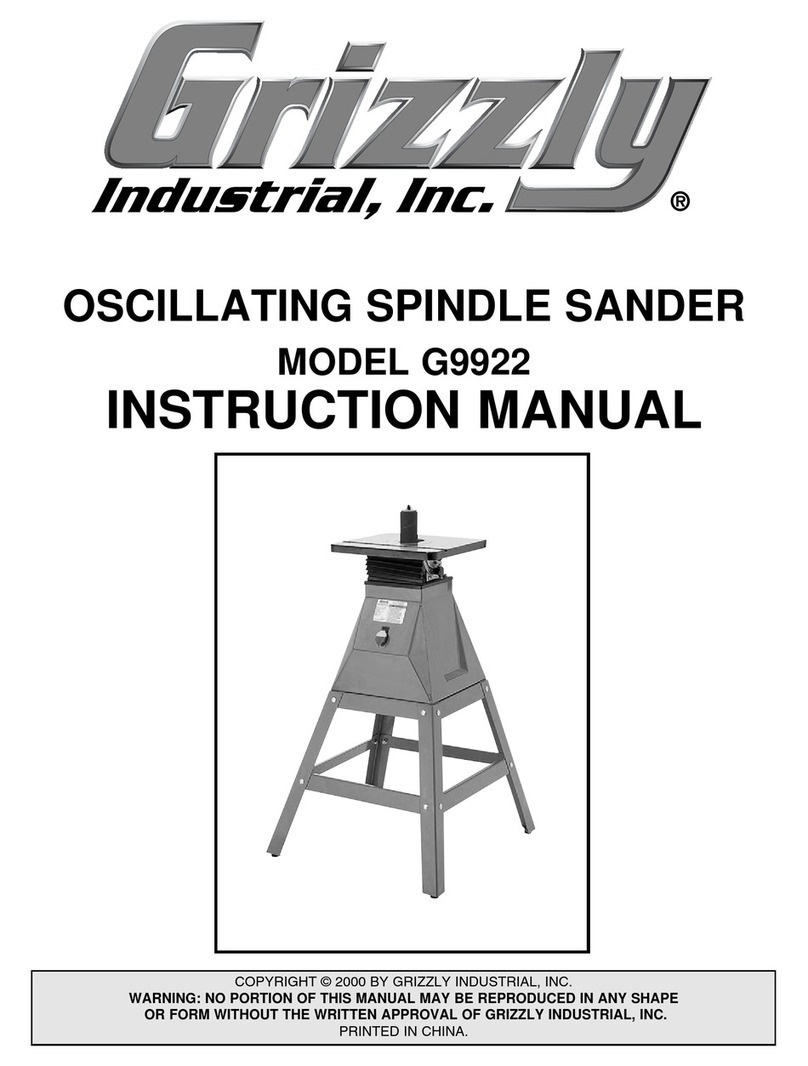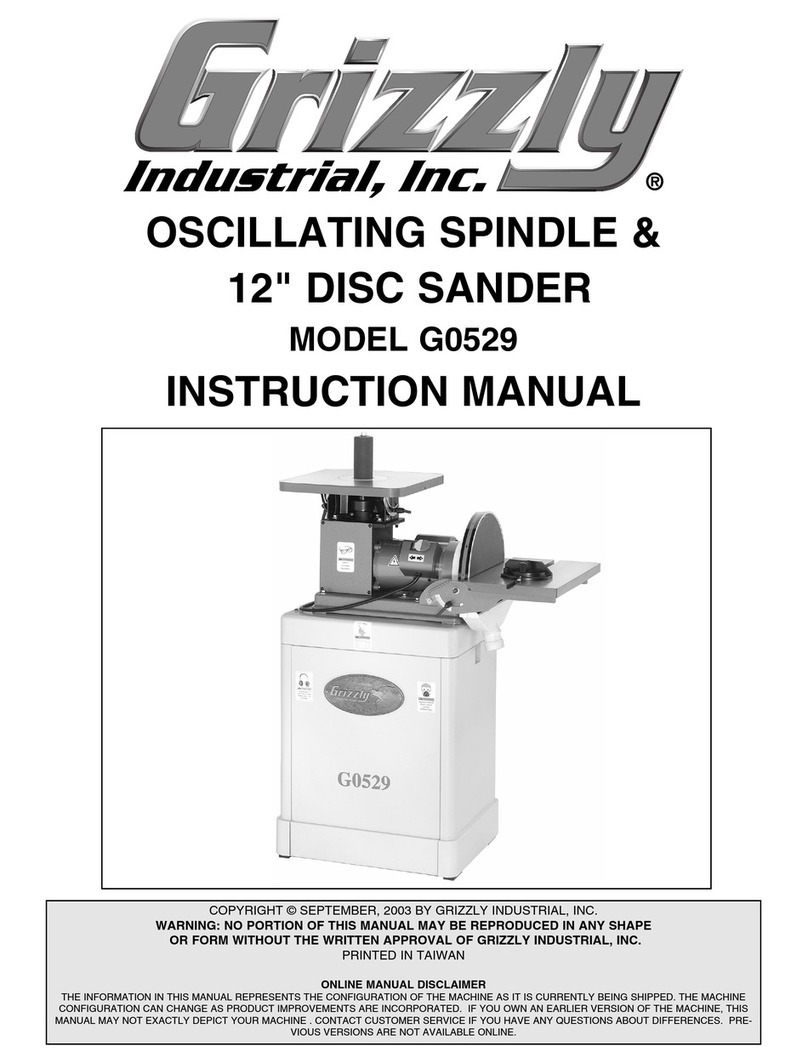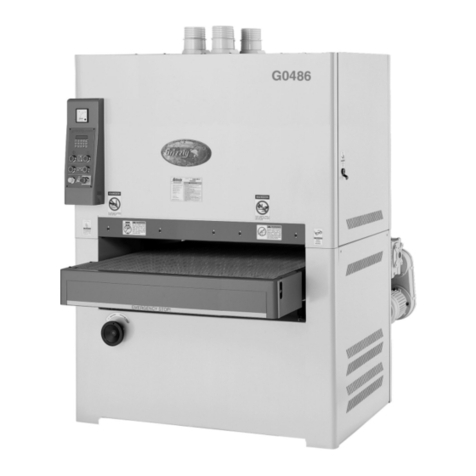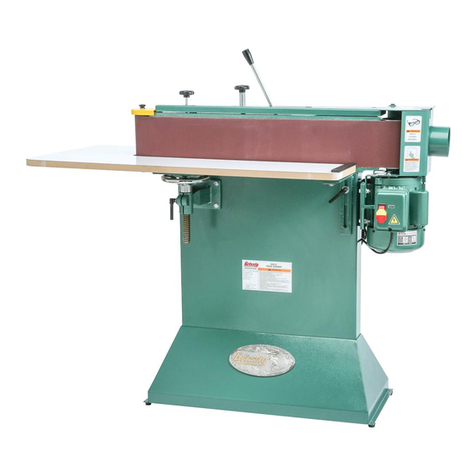- 3 -
G1071 Oscillating Spindle Sander
II. SAFETY RULES FOR ALL TOOLS
The Model G1071 is inherently dangerous. Using the tool with respect and caution will
lessen the possibility of mechanical damage or operator injury. If normal safety precau-
tions are overlooked or ignored, serious personal injury may occur.
This machine is specifically designed for wood sanding operations. Modifications or
improper use of this tool can result in damage to the machine and possible operator injury,
and will void all warranties. If you are confused about any aspect of this machine, DO NOT
use it until you have resolved any questions you might have. The following are important
safety rules for all tools:
1. KNOW YOUR POWER TOOL. Read
the owner’s manual carefully. Learn the
tool’s applications and limitations, as
well as its hazards.
2. KEEP ALL GUARDS IN PLACE and in
working order.
3. GROUND ALL TOOLS. If an adapter is
used to accommodate a two-prong
receptacle, the adapter plug must be
attached to a known ground. Never
remove the grounding prong.
4. REMOVE ADJUSTING KEYS AND
WRENCHES. Make it a habit to check
that keys and adjusting wrenches are
removed from the machine before turn-
ing it on.
5. KEEP WORK AREA CLEAN.
Cluttered areas and benches invite
accidents.
6. AVOID DANGEROUS ENVIRON-
MENTS. Do not use power tools in
damp or wet locations or expose them
to rain. Keep your work area well light-
ed.
7. KEEP CHILDREN AND VISITORS
AWAY. All children and visitors should
be kept a safe distance away from your
work area. Serious injuries could occur.
8. MAKE WORKSHOP CHILD-PROOF
with padlocks, master switches, or by
removing starter keys.
9. DO NOT FORCE TOOL. Tools work
better and more safely when they are
allowed to work at their own speed.
10. USE THE RIGHT TOOL. Do not use a
tool or an attachment to do a job that it
was not intended to perform.
11. WEAR PROPER APPAREL. Do not
wear loose clothing, gloves, neckties, or
jewelry that might get caught in moving
parts. Non-slip footwear is also recom-
mended. Wear a hat or other protective
head wear if your hair is long.
12. USE SAFETY GLASSES AND EAR
PROTECTION. Also use a dust mask if
the sanding operation is dusty.
13. SECURE YOUR WORK. Use clamps or
a fixture to hold your work. It is safer
than using your hands and frees up
both hands for operating the tool.
14. DO NOT OVERREACH. Keep proper
footing and balance at all times.
15. MAINTAIN TOOLS IN TOP CONDI-
TION. Keep tools sharp and clean for
best and safest performance. Follow
instructions for lubricating and changing
accessories.
